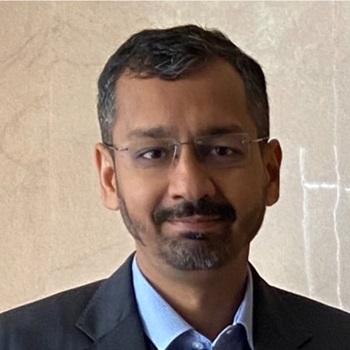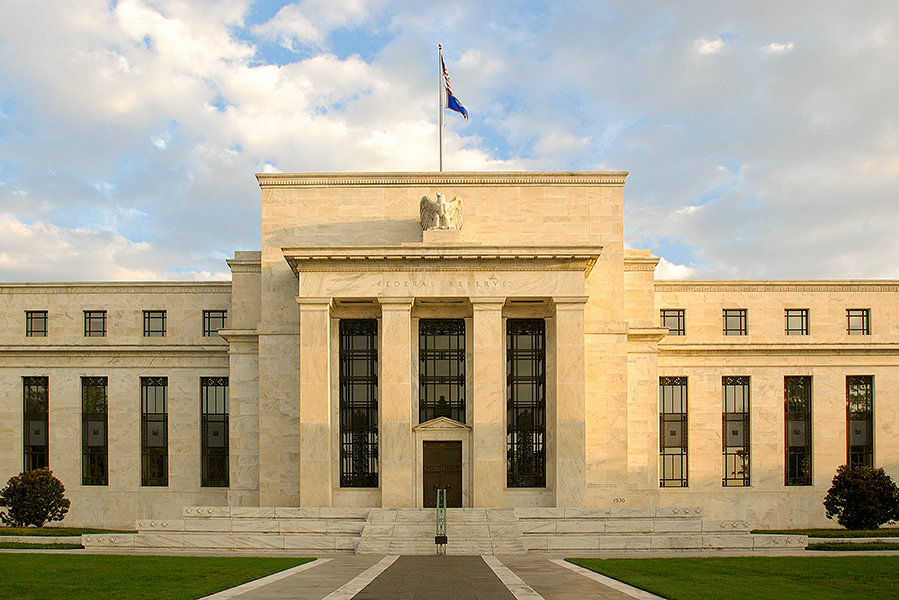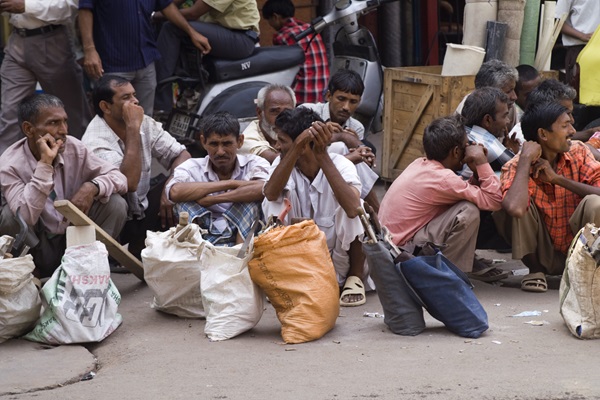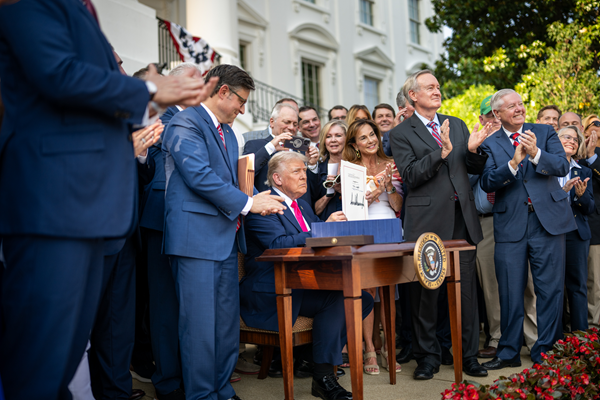.png)

By Srinath Sridharan
Dr. Srinath Sridharan is a Corporate Advisor & Independent Director on Corporate Boards. He is the author of ‘Family and Dhanda’.
September 8, 2025 at 10:41 AM IST
In recent weeks, the facade of Trump-Modi bonhomie has fractured, revealing fissures that reflect structural fragility rather than personal rapport in the India–US relationship. On August 6, President Donald Trump announced punitive tariffs of 25% on a wide array of Indian exports, followed by an additional levy of equal magnitude linked to India’s continued purchase of discounted Russian oil.
These measures now affect more than half of India’s exports to its single largest trading partner and represent one of the most severe trade actions against New Delhi in over two decades. The move underscores Washington’s enduring tendency to view India through the lens of trade operations, rather than strategic partnership.
New Delhi responded with calculated restraint. Instead of retaliating or escalating rhetorically, the Modi government signalled economic fortification. A deep overhaul of the Goods and Services Tax is scheduled to come into effect from September 22, deliberately timed with India’s festive consumption cycle, reflecting a preference for resilience over confrontation. While politically announced as policy reform, the message was clear: India will not be held hostage to the tactical oscillations of American trade policy.
The costs of Trump’s tariff measures are not confined to India. US firms that depend on Indian pharmaceuticals, IT services, textiles, auto components, and other industrial inputs will face higher costs that will ultimately affect American consumers. By deploying tariffs against a key trading partner, Washington undermines its own supply chains. India has therefore accelerated diversification of trade toward ASEAN, the European Union, and Africa, hedging against the volatility of a partner that often confuses coercion with strategic statecraft.
As tensions intensified, Prime Minister Modi attended the Shanghai Cooperation Organization summit in Tianjin. Photographs of him walking alongside Xi Jinping and Vladimir Putin, clasping Putin’s hand and animatedly conversing with Xi, circulated rapidly across Western media. In Washington, the imagery provoked alarm and disbelief. Trump responded with one of his signature outbursts, stating, “Looks like we’ve lost India and Russia to deepest, darkest China.” He dismissed India as a “dead economy,” while his adviser Peter Navarro accused New Delhi of “war profiteering” via Russian oil and went so far as to label the Ukraine conflict “Modi’s war.” So far, India has responded with measured civility, demonstrating its enduring cultural strength captured by the Sanskrit phrase ‘Satyam vada, dharmam chara’, meaning speak the truth, follow righteousness.
Within days, however, Trump executed a rhetorical reversal. He told the media that “India and the United States have a special relationship,” described Modi as a “great Prime Minister,” and asserted that they would “always be friends,” even while expressing disappointment over India’s Russian oil purchases. Modi reciprocated publicly on X, stating, “Deeply appreciate and fully reciprocate President Trump’s sentiments and positive assessment of our ties. India and the U.S. have a very positive and forward-looking Comprehensive and Global Strategic Partnership.” The exchange sought to restore equilibrium but could not erase the public spectacle of tension.
But a conciliatory tweet cannot disguise the rupture. The White House’s oscillation, moving from describing the bilateral trade as “a totally one-sided disaster” to praising Modi as a cherished ally while simultaneously imposing punitive tariffs, undermines credibility.
The paradox becomes even more apparent in defence cooperation. India continues to procure American drones, helicopters, and aircraft engines while conducting regular joint military exercises with the United States. The Indo-Pacific strategy depends on India as a counterweight to China, a reality that rhetoric alone cannot obscure. The contradiction between punitive trade measures and reliance on India for strategic balancing exposes the performative nature of Trump’s approach.
The context is one of strategic autonomy rather than alignment. India has maintained relations with Moscow and Beijing even as Washington shifted toward protectionist brinkmanship. The broader unpredictability in the US–India relationship prompted Modi to visit China after seven years, signalling that India will diversify its diplomatic engagements, even with its strategic rivals, to safeguard its interests. For India, participation in SCO optics with Xi and Putin is no more binding than gestures toward Washington.
Domestic political imperatives further shape this divergence. Trump’s tariffs signal his intent to safeguard American industry to Rust Belt constituencies, while Modi’s restraint signals India’s refusal to capitulate to pressure for his nationalist base. Neither leader can afford the appearance of concession. The choreography of friendship functions as theatre for domestic audiences more than a substantive alliance.
Repairing these ruptures requires more than rhetoric. New Delhi has been publicly slighted and materially bruised. While the Modi government will respond positively to credible overtures, it will not settle for empty affirmations.
The muted response of nearly four million Americans of Indian descent and the silence of Indian-origin CEOs leading global American firms underscores that even influential soft power allies can remain silent when India is publicly mocked. After all, these CEOs must operate and survive within the United States, their largest political and economic base, where their companies are headquartered and where their careers and wealth depend. Their quietude not only deprived India of a potentially powerful counterweight in American political and corporate circles but also exposed the limitations of diaspora influence when confronted with public disparagement. In a relationship often portrayed as underpinned by shared values and people-to-people links, this moment revealed that symbolic capital alone cannot shield India from unilateral actions. Hopefully this is a message that Indian political leadership has learnt about overplaying the diaspora-expectations.
History demonstrates that strong leaders rarely compromise sovereignty or political legitimacy. Modi’s domestic persona is defined by defiance and tough stance based on sovereignty, whether against cross-border terrorism, territorial incursions, or foreign interference in internal affairs. For Washington to act as a twenty-first-century colonial arbiter of the world’s largest democracy invites widespread backlash in India. Modi will require meaningful initiatives from the United States before he considers reciprocal gestures.
These cycles are not new. In 1998, India’s nuclear tests triggered sanctions, yet by 2005 both sides had forged a landmark civil nuclear agreement. Nixon’s disdain in the 1970s gave way to later administrations’ recognition of India’s strategic value. The oscillation between pressure and partnership is a recurring motif that stabilises only when Washington accepts India’s strategic autonomy as fundamental.
Despite the present acrimony, the deeper historical pattern endures. India and the United States have long oscillated between praise and estrangement. Shared democratic rhetoric coexists uneasily with divergent security and economic imperatives. Beijing remains the constant irritant, testing India through territorial incursions and supporting Pakistan to blunt India’s rise. New Delhi leans into US security alignments that it regards as existential, while Beijing portrays them as hostile. Russia continues as a shared partner for India and China, further complicating the trilateral dynamic.
The events of recent weeks are less a rupture than a reminder that the India–US relationship is transactional, shaped by geopolitics and personality rather than proclamations of permanent friendship. Modi and Trump may exchange warm words when convenient, but structural divergences remain. India must continue fortifying domestic economic resilience and insist upon parity of treatment. The United States must recognise that India cannot be cajoled by flattery after public disparagement.
The Trump-Modi bonhomie remains fragile, sustained more by gestures than substance, at least for now. Both nations need each other to balance strategic and economic interests, yet each requires a face-saving mechanism that allows leaders with strong personas to retreat without losing credibility. Its durability depends on the United States engaging India with respect. Only then can the relationship move beyond performance to genuine partnership.
For India, the path forward requires neither submission nor compromise. The Modi government has demonstrated restraint and resolve, pursuing resilience over retaliation, autonomy over alignment, and dignity over dependency. This is a reaffirmation of sovereignty for a nation that has endured external pressures for decades without bending.
If the United States seeks genuine partnership, it must approach India with respect and parity. Until then, New Delhi will chart its own course, engaging where interests align and standing firm where they do not. Modi’s message is unmistakable: India will engage the United States as a friend, never as a vassal. In that firmness lies both his political capital and the nation’s strategic credibility.


